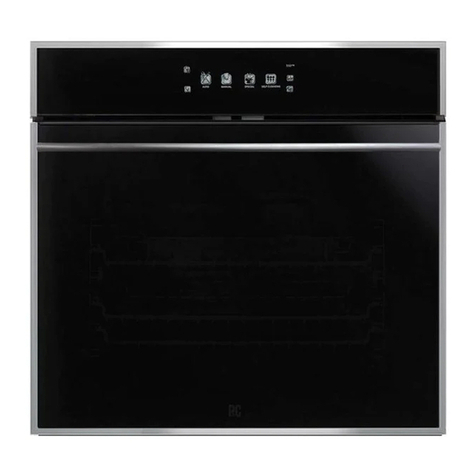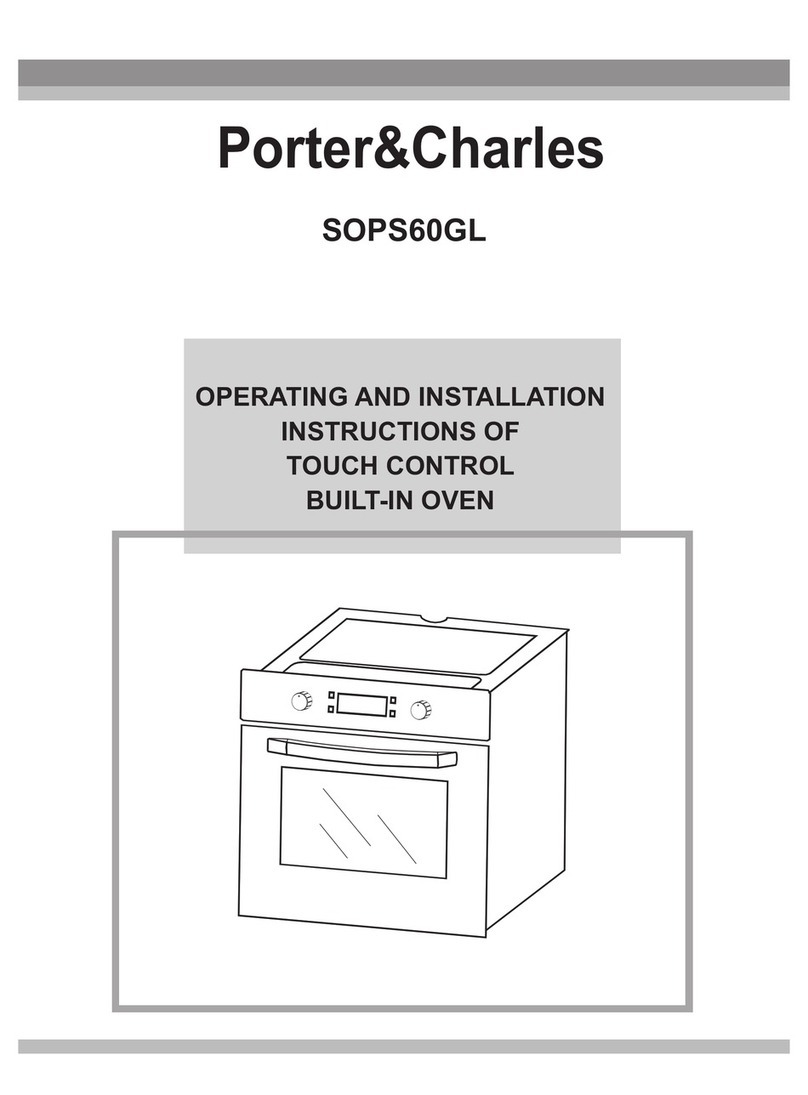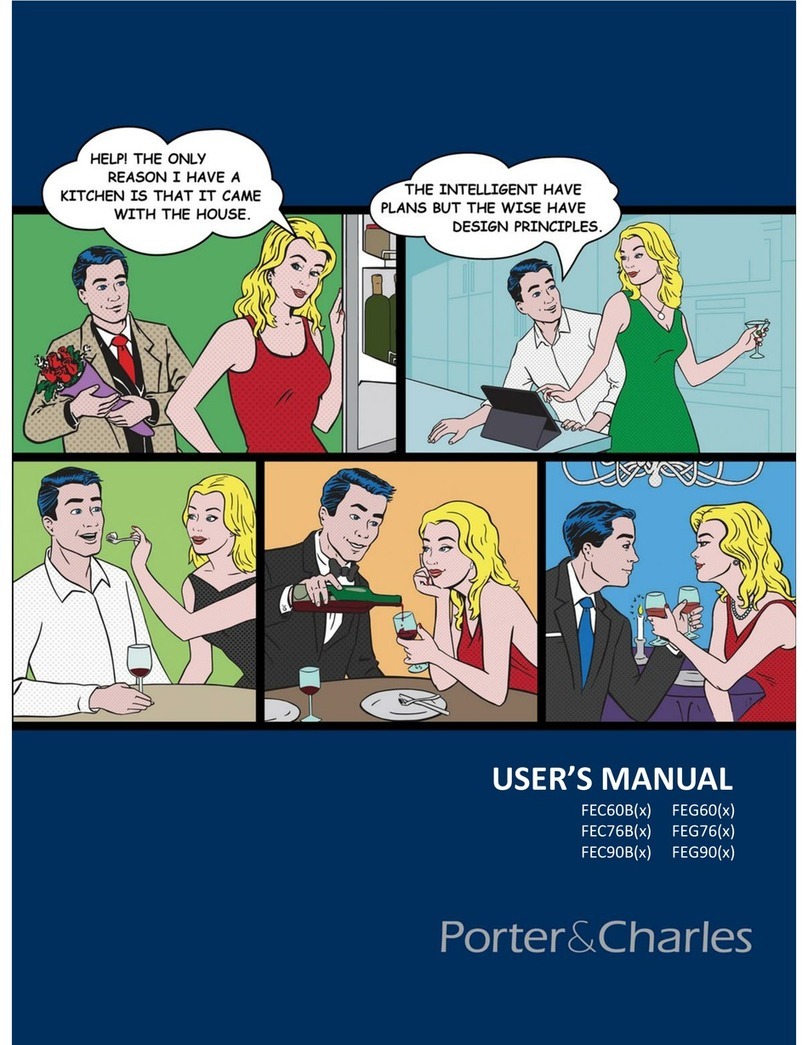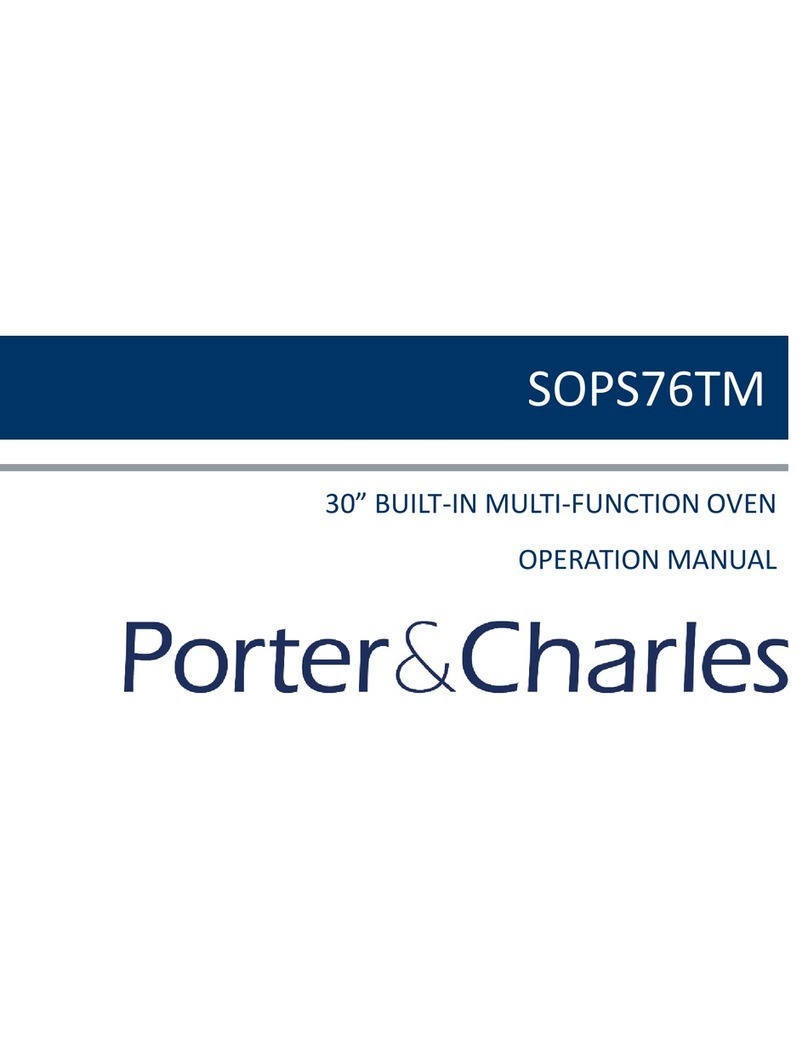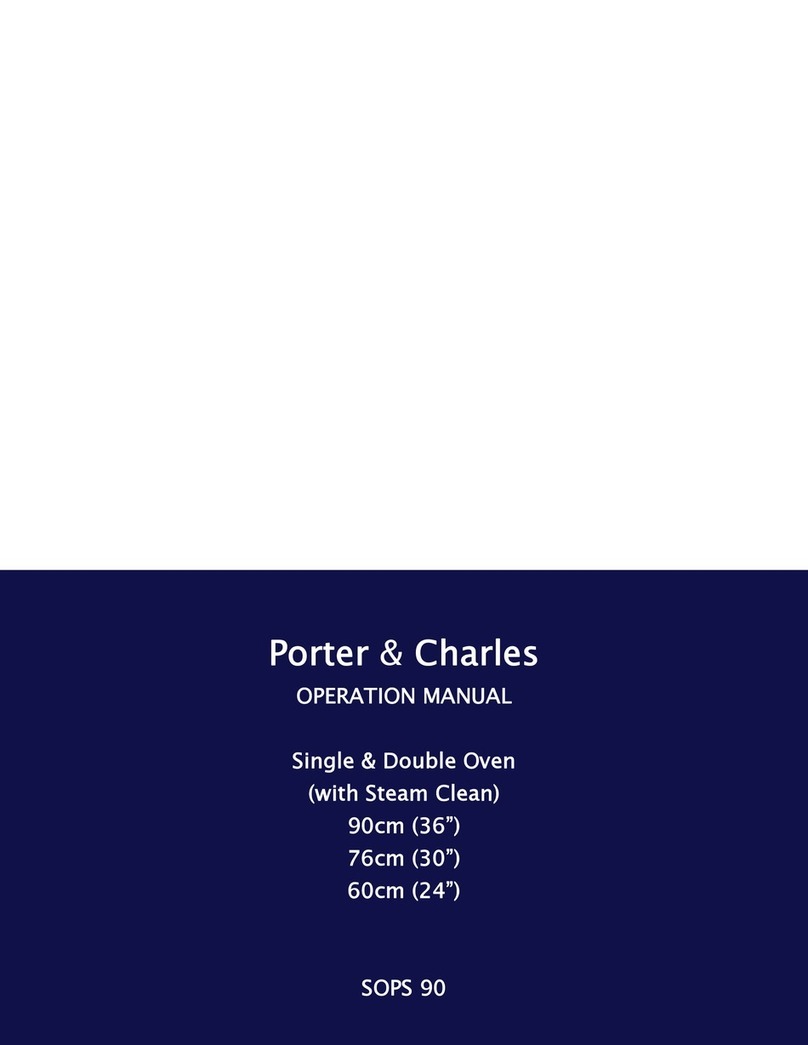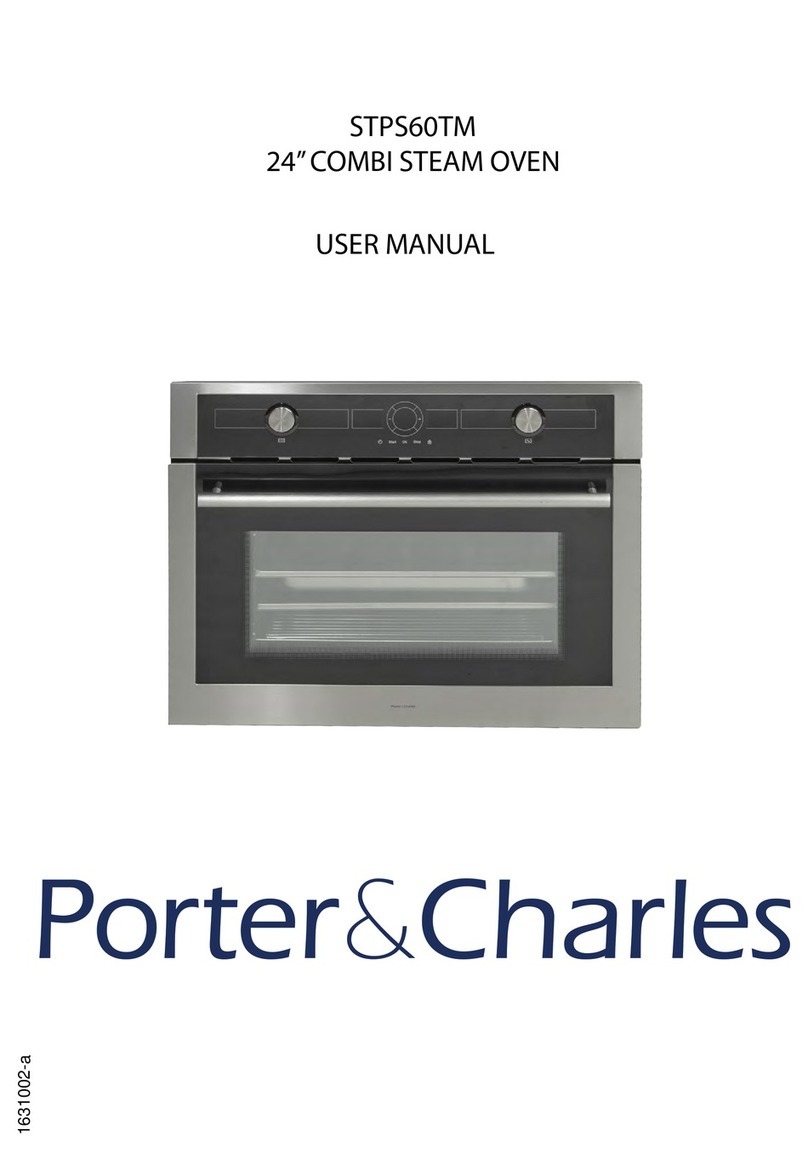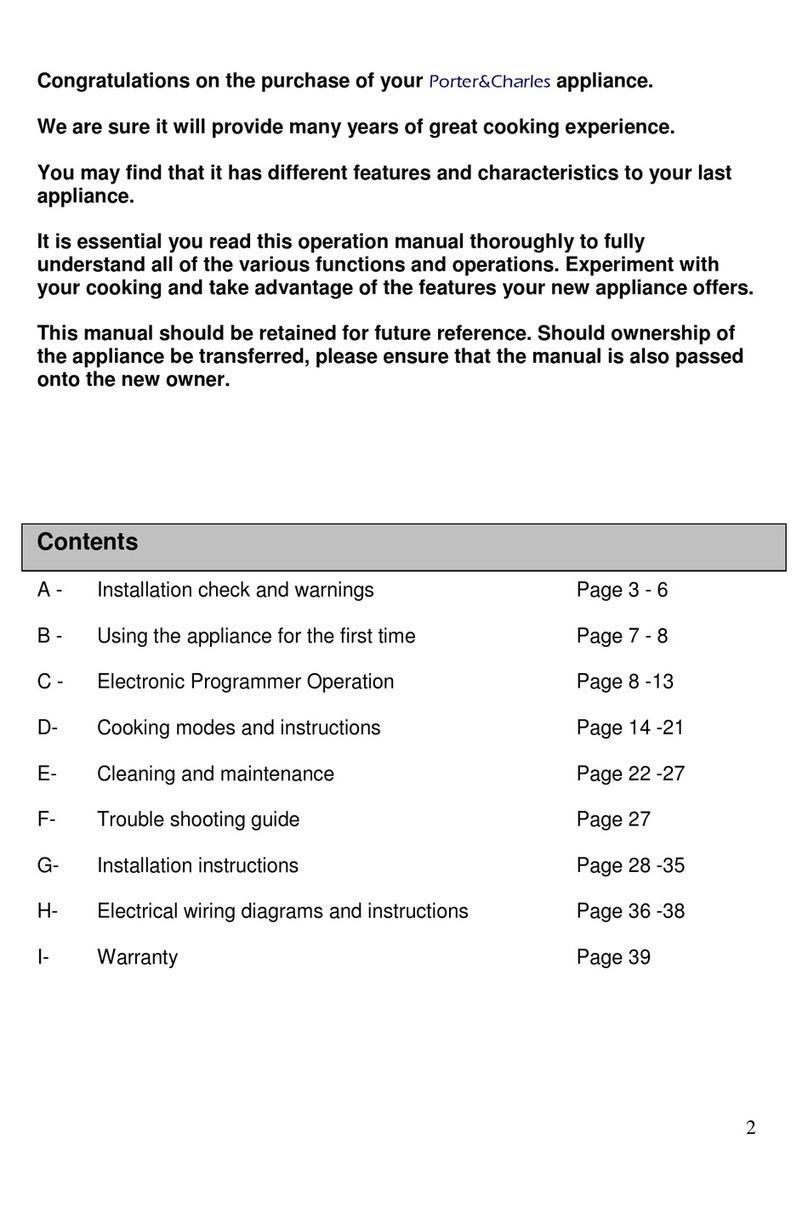
D - Cleaning and Maintenance
1. Cleaning and maintenance
Proper cleaning and care of your appliance is essential to maintain its appearance and durability.
NOTE:
People with sensitivity to cleaning chemicals must take the necessary precautions. It is
recommended that protective gloves be worn while cleaning the appliance. Routine cleaning of
the appliance should only be performed when the appliance is at room temperature.
Do not use any acid or caustic cleaners, abrasive powders, or scourers on the interior or
exterior of the appliance. Substances or items with these properties may discolor or damage
the finishes of your appliance. If any abrasive, acidic, caustic substance or cleaning agent should
come into contact with the appliance, rinse it off immediately with water, taking special care to
avoid injury if surfaces are hot.
When using the appliance, it may become dirty by food spills and splatters or foreign items such
as plastics accidentally coming into contact with warm or hot surfaces. Foods that contain acidic
substances or sugar can discolor or damage enamel finishes.
The enamel interior of the oven is a hard durable finish that is resistant to wear and discoloration.
However, to maintain the appearance and durability of the finish, any spills must be wiped off
immediately. This should be done even if the oven is still hot, so necessary precaution must be
taken to avoid injury. Once cool, the affected area should be thoroughly cleaned and rinsed using
non-abrasive, mild cleaning detergents and water.
2. Care for stainless steel
No metal is indestructible and certain procedures should be followed to maintain the finish and
durability of stainless steel.
Never leave stainless steel items unwashed. The surface responds best to gentle cleaning
methods. Scouring materials and harsh abrasives should not be used. Frequent washing with
water (preferably hot) is the recommended treatment, followed by rinsing with fresh clean water,
and then wiping dry with a soft cloth or paper towel.
A little soap or detergent may be added to the washing water, but too much can produce a cloudy
film over the appliance. Use of steel wool is not recommended, but stainless steel wool (a fine
mesh pad) is an excellent cleaning aid. Oil or grease in the washing water can leave a rainbow
film when it dries. It can easily be removed by simply using the polishing and cleaning methods
described previously. Thoroughly rinsing with clean water is the best method, and it is a surprise
how easily stainless steel can be kept sparkling clean by using the above simple method.
Never leave stainless steel to air-dry.
3. Only place cookware on oven shelves.
Other surfaces (such as the trim) are not completely resistant to hard materials or direct heat, and
may be permanently damaged by such use.

